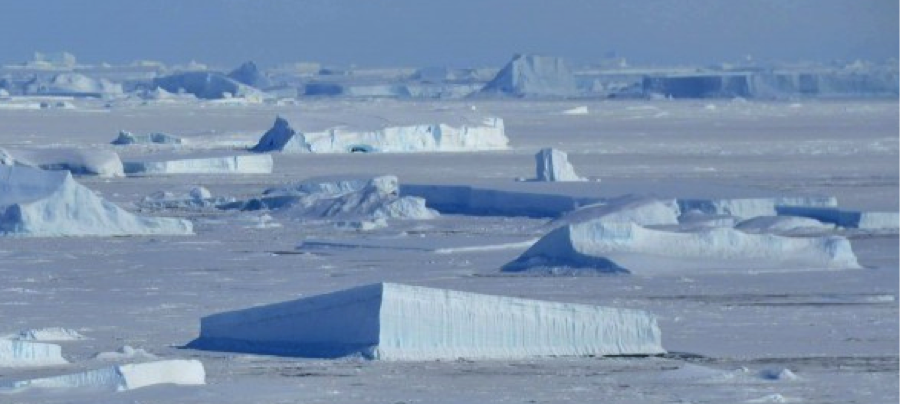
Global sea levels could rise by more than two metres this century and force almost 200 million people to move to higher ground, unless governments rein in greenhouse gas emissions, scientists say.
“A sea level rise of this magnitude would clearly have profound consequences for humanity,” according to the authors, led by Jonathan Bamber of Bristol University.
There are gigantic – and growing – uncertainties about rising seas, partly because of what some scientists call the ‘unknown unknowns’ about how ice sheets in Antarctica and Greenland will react to warming this century.
The new study polls scientists’ opinions of what could happen if the world keeps jacking up greenhouse gas emissions from cars, factories and power plants, despite repeated pledges by governments to cut back under the 2015 Paris Agreement.
“We find that a global total sea level rise exceeding 2 metres by 2100 lies within the 90% uncertainty bounds for a high emission scenario,” they write.
“This could result in land loss of 1.79 million square kms, including critical regions of food production, and displacement of up to 187 million people,” they add.
That area at risk of getting swamped is the size of Mexico or Indonesia. Entire island nations in the Pacific or Indian Oceans could be lost.

The estimates are higher than those by the U.N.’s Intergovernmental Panel on Climate Change (IPCC) in its last report in 2013 (likely between 28 and 98 cms, depending on how far governments act to cut emissions) and those in a 2018 draft of a Special Report due to be published in September this year (between 33 and 133 cms).
That 2018 draft (below, reported in Reuters “Project Greenland” last year) shows global mean sea level rise (GMSL), in centimetres:

Like almost science, there’s a bit of apples and pears about the new study and comparisons with the IPCC.
The IPCC operates within “likely” ranges, which means a two-thirds or 66.6 percent chance. The new report widens those boundaries to 90 percent, which inevitably allows more extreme projections.
And there has been speculation about higher numbers before.
In 2016, former NASA scientist and climate guru James Hansen wrote that the pace of sea level rise could be multi-metres if the worst case of a doubling from current rates around 3 mm a year. “Doubling times (in the rate of sea level rise) of 10, 20 or 40 years yield multi-meter sea level rise in about 50, 100 or 200 years,” he wrote.
The new study is intriguing partly because it is so candid that scientists are flummoxed. “Expert uncertainty has grown, in particular because of uncertain ice dynamic effects,” it says.
Among the new uncertainties are whether vast unstable cliffs of ice could form at the end of glaciers in Antarctica, and rapidly collapse, if ice shelves floating around Antarctica break up and allow ice inland to slide faster towards the ocean.
But what should sensible coastal planners do when there are so many uncertainties? Plan, and try and find investments, for 2 metres of sea level rise?

None of the estimates of sea level rise has any validity in geological science. This is because the earth’s crust is subject to two forms of isostasy: glacio-isostasy and sedimentary isostasy. These act locally and independently, sometimes in concert and sometimes in opposition where thick glaciers are melting. The entire concept of eustatic sea level change if it exists is comprehensively overwhelmed by the local magnitude of crustal isostatic uplift and sinking. Thus it is valid to talk only of local Relative Sea Level, not global sea level.
Thanks for the comment – mainstream scientists are clear that – overall – sea levels around the world are rising despite a lot of local variations caused by subsidence, isostatic uplift etc. Basically, they say: melting ice + thermal expansion of water = higher sea levels
https://oceanservice.noaa.gov/facts/sealevel.html
These estimates are likely leaving out the effects of the coming methane surge that is coming after 2025: sea ice is anticipated to go to zero in September 2025. After that, all of the energy expensrd to melt ice will be expended heating up water. Off the coast of Siberia is a shallow sea containing frozen methane. This will rapidly add to the atmosphere and our climate will explode with new and exciting features.
Thanks Marc, agreed that methane is a potential climate timebomb in the Arctic.
I hope that we’ll be lucky – some of the shallow seas off Siberia formed only after the end of the Ice Age drove up world sea levels by about 120 metres. Some climate scientists say that means the frozen seabed has already been in contact with water (… a lot warmer than bone-chilling winter temperatures that create permafrost on land) for thousands of years.
So maybe a melt of Arctic sea ice won’t trigger an immediate, disastrous release of methane?
https://www.giss.nasa.gov/research/briefs/gornitz_09/